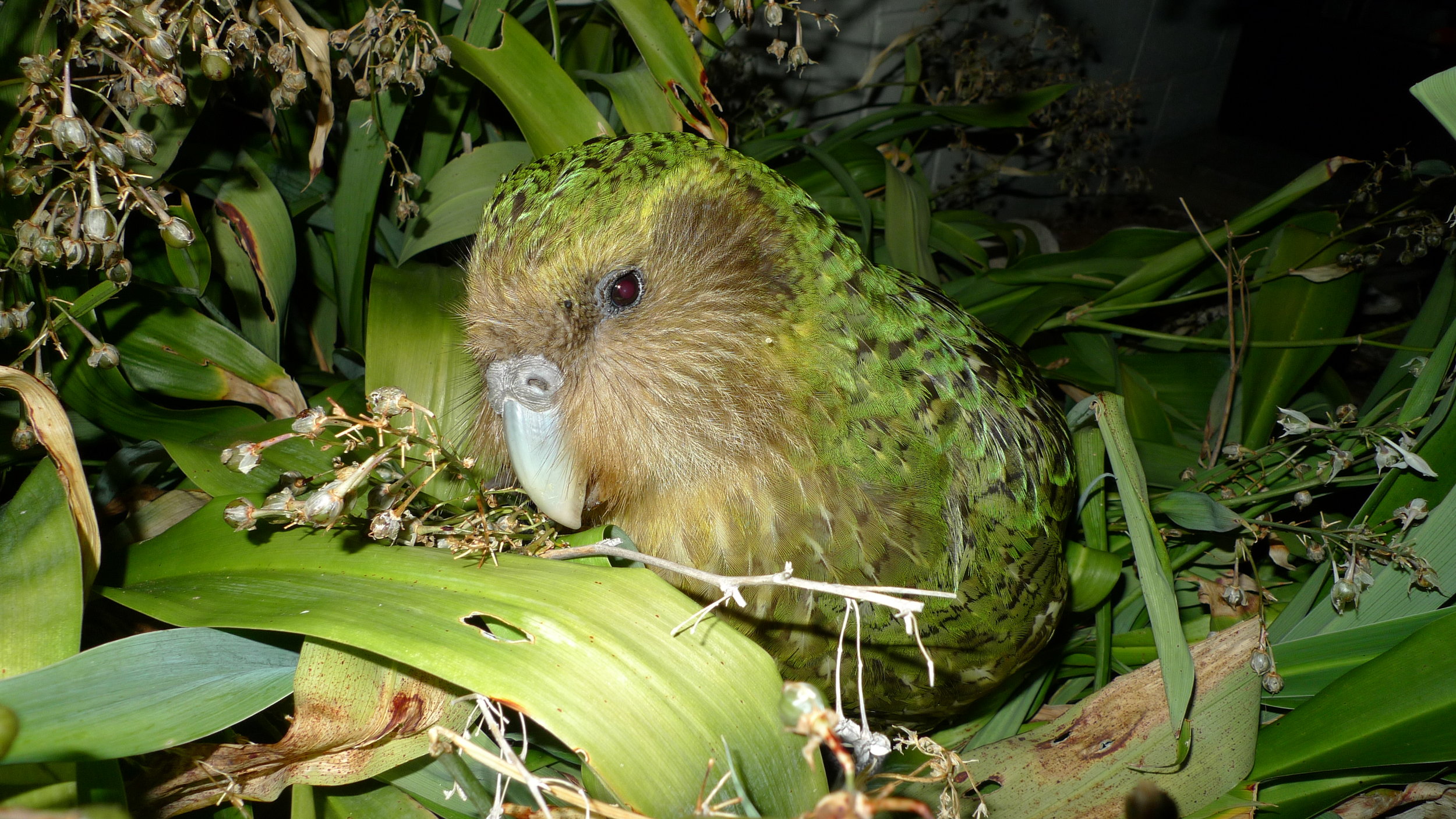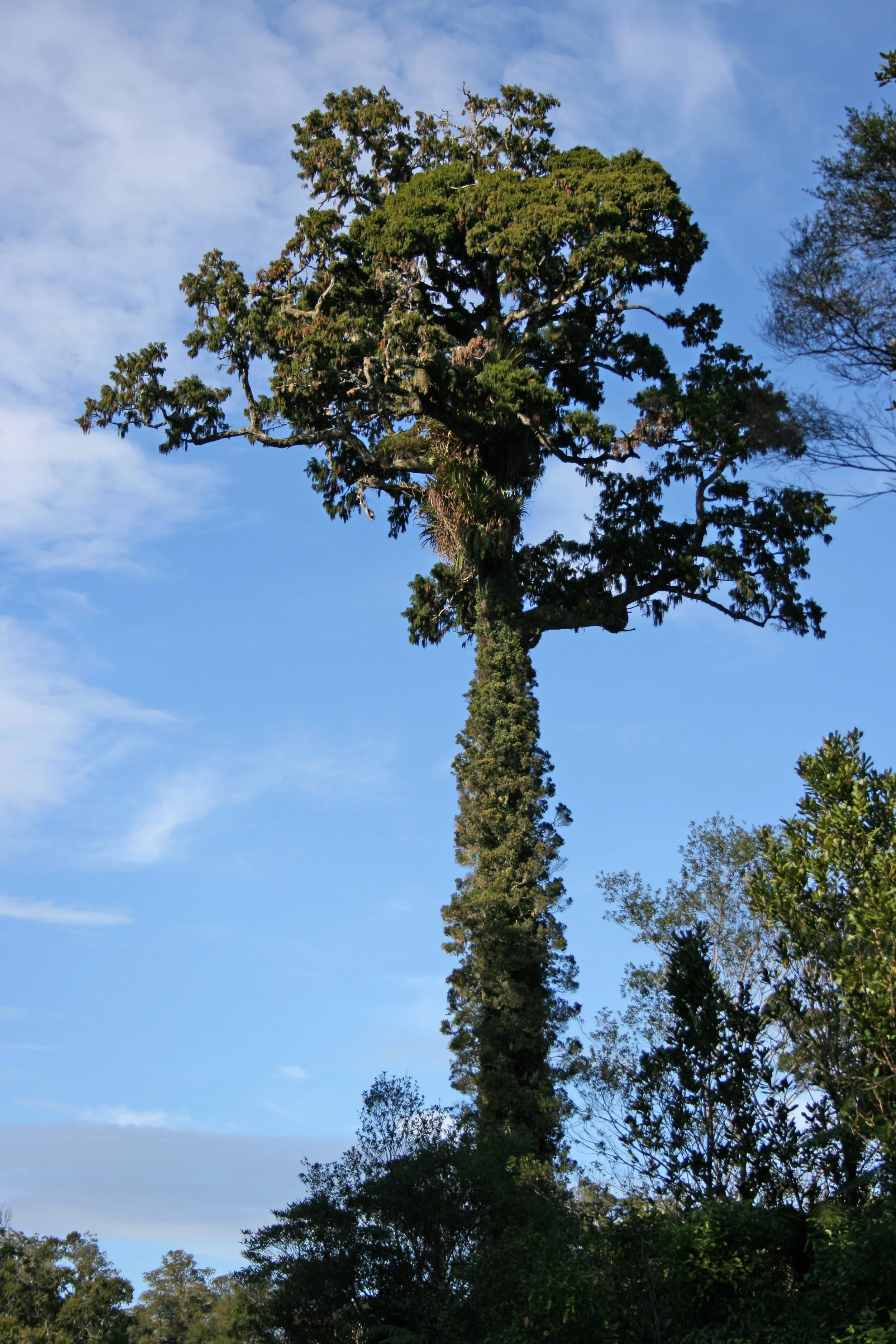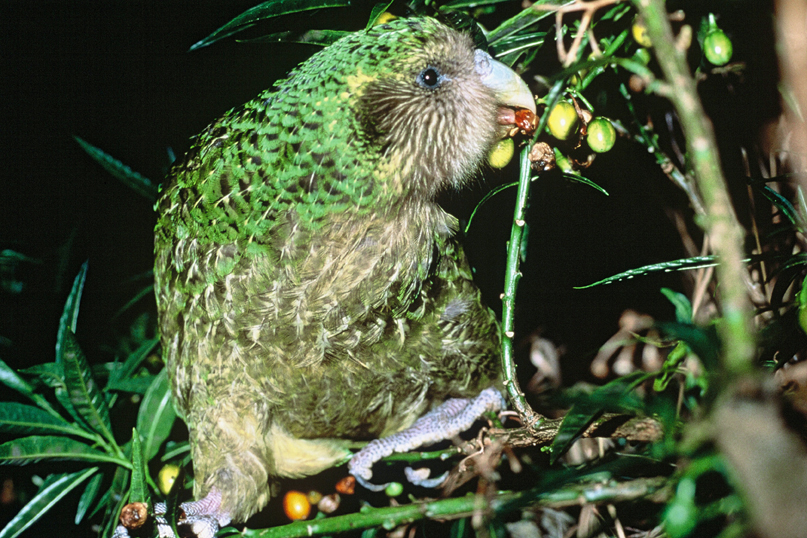Photo by RTBG licensed under CC BY-NC-SA 2.0
I am only just starting to fully appreciate the diversity in form and habit exhibited by the gymnosperm lineages alive today. What I once thought of as a unidimensional group of plants is proving to be wonderfully diverse, despite being overshadowed by the angiosperms. For instance, imagine my surprise when I first laid eyes on a member of the genus Phyllocladus.
At first glance, these weird conifers look more like a broad-leaf angiosperm. This similarity is superficial, of course. Before we get to why they look the way they do, it is worth considering this group from a as a whole. The genus Phyllocladus comprises roughly 5 species spread out among New Zealand, Tasmania, and Malesia. They are somewhat variable in form but usually settle out somewhere between a good sized shrub and a medium sized tree. Where exactly this genus of oddball gymnosperms fits on the tree of life is subject to some debate.
Phyllocladus trichomanoides licensed under public domain
For many years after its initial description, Phyllocladus was placed in a family of its own - Phyllocladaceae. Subsequent molecular work has only managed to add to the confusion. Despite its unique morphological characteristics, some authors feel this genus fits nicely into the family Podocarpaceae. At least one other study suggests that it doesn’t belong in Podocarpaceae but rather is situated as sister to the family. By the looks of it, this will not be cleared up any time soon. So, for now, let’s focus in on why these plants are so strange.
For starters we have the “leaves.” I place the word ‘leaves’ in quotes because they are not true leaves. The correct term for these structures are phylloclades (hence the generic name). A phylloclade is a flattened projection of a branch that takes on the form and function of a leaf. What we know of as leaves have been greatly reduced in the genus Phyllocladus. If you want to see them, you must look closely at the tips of the phylloclades. Early on in their development, the leaves exist as tiny brown scales. These scales are gradually lost over time as they serve no function for the plant.
Phyllocladus alpinus. Photo by MurielBendel licensed under CC BY-SA 4.0
Though no one has tested this directly (that I am aware of), the evolution of phylloclades over leaves likely has to do with energy conservation in one form or another. Why produce stems and leaves when you can co-opt stem-like structures to do the work for you? Oddly enough, some suggest that to consider them stems in the truest sense of the word is erroneous. Morphologically speaking, they share traits that are intermediate between branches and stems. However, I am going to need to do more homework before I feel comfortable elaborating on this point.
Only when it comes time for reproduction does their place among the gymnosperms become readily apparent, that is before the ovules are fertilized. All members of the genus Phyllocladus produce cones. Male cones are tiny, cylindrical structures located at the ends of their side branches whereas female cones are clustered into groups along the axils or margins of the phylloclades. Once fertilized, however, these plants offer another point of confusion for the casual observer.
Phyllocladus is yet another genus of conifers that has converged on a fruit-like seed dispersal strategy. As the seed cones mature, the scales gradually swell and become berry-like. Poking out of the bright red and/or white aril is a single seed. These fleshy arils function in a similar way to fruit in that they attract birds, which then consume them, dispersing the seeds later on in their feces.
Another intriguing aspect of their morphology occurs below ground. The roots of this genus form nodules, which provide a home for bacteria that specializing in fixing atmospheric nitrogen. In return for a home and some carbohydrates from photosynthesis, these bacteria pay these trees with nitrogen that would otherwise be unavailable. Pretty remarkable stuff for a such an esoteric group of conifers!










